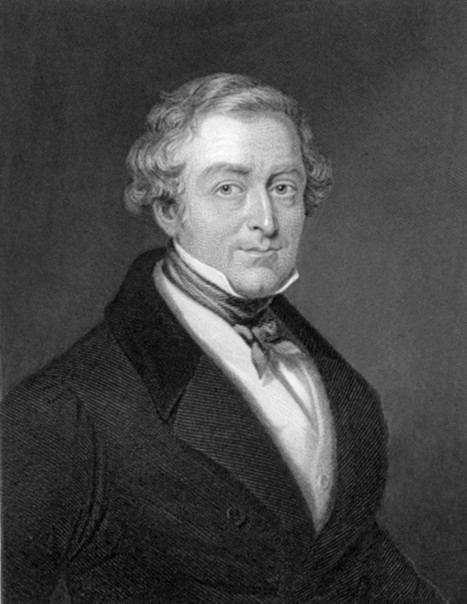 | ||
Earl Peel is a title in the Peerage of the United Kingdom. The Peel family descends from Robert Peel, eldest son of a wealthy cotton merchant. The family lands, known as Drayton Manor, in the County of Stafford would become more commonly known in modern-day as an amusement park.
Contents
- History
- Viscounts Peel 1895
- Earls Peel 1929
- Peel Baronets of Drayton Manor and Bury 1800
- Other notable members of the Peel family
- References
The family seat is Elmire House, near Ripon, North Yorkshire.
History
The peerage was created in 1929 for the Conservative Party politician William Wellesley Peel, 2nd Viscount Peel, Chancellor of the Duchy of Lancaster from 1921 to 1922, Secretary of State for India from 1921 to 1922 and 1928 to 1929 and First Commissioner of Works from 1924 to 1928. He was made Viscount Clanfield, of Clanfield in the County of Southampton, at the same time, also in the Peerage of the United Kingdom. He was the son of Arthur Wellesley Peel, who served as Speaker of the House of Commons between 1884 and 1895. The latter year he was created Viscount Peel, of Sandy in the County of Bedford, in the Peerage of the United Kingdom. Peel was the fifth son of Prime Minister Sir Robert Peel, 2nd Baronet, of Drayton Manor (see below for earlier history of the family). The first Earl was succeeded by his son, the second Earl. In 1942 he succeeded his second cousin once removed as seventh Baronet, of Drayton Manor. Lord Peel later served as Lord-Lieutenant of Lancashire from 1948 to 2 January 1951. As of 2010 the titles are held by his son, the third Earl, who succeeded in 1969. He is one of the ninety elected hereditary peers that remain in the House of Lords after the passing of the House of Lords Act 1999, and sits as a cross-bencher. Lord Peel was Lord Warden of the Stannaries from 1994 to 2006 and is Lord Chamberlain of the Household since 2006.
The Peel family descends from Robert Peel, who established a calico-printing firm in Blackburn in 1764. His eldest son Robert Peel was a wealthy cotton merchant and also sat as Member of Parliament for Tamworth from 1790 to 1818. In 1800 he was created a Baronet, of Drayton Manor in the County of Stafford and of Bury in the County Palatine of Lancaster, in the Baronetage of Great Britain. He was succeeded by his eldest son Sir Robert Peel, 2nd Baronet, the noted statesman. He was Home Secretary from 1822 to 1827 and 1828 to 1830, Chancellor of the Exchequer from 1834 to 1835 and Prime Minister of the United Kingdom from 1834 to 1835 and from 1841 to 1846 and is best remembered for creating the modern concept of the police force while Home Secretary. The police, first known as Peelers, are still commonly referred to as Bobbies, in his name. He is also known for overseeing the formation of the Conservative Party out of the shattered Tory Party, and for the repeal of the Corn Laws. Peel died after a fall from his horse on Constitution Hill in London.
He was succeeded by his eldest son, the third Baronet. He was also a politician and served as a Lord of the Admiralty from 1852 to 1857 and as Chief Secretary for Ireland from 1861 to 1865. His grandson, the fifth Baronet, married the actress and comedian Beatrice Gladys Lillie. Their only son, the sixth Baronet, was an ordinary seaman in the Royal Navy and was killed in action in April 1942, aged only twenty-one. On his death the line of the eldest son of the second Baronet failed and the title was inherited by his second cousin once removed, the second Earl Peel, who became the seventh Baronet. See above for further history of the title.
Viscounts Peel (1895)
Earls Peel (1929)
The heir apparent is the present holder's only son Ashton Robert Gerard Peel, Viscount Clanfield (b. 1976)
The heir apparent's heir apparent is his son Hon. Nicholas Robert William Peel (b. 2015)
Peel Baronets, of Drayton Manor and Bury (1800)
see above for further succession
Other notable members of the Peel family
Several other members of the Peel family have also gained distinction:
